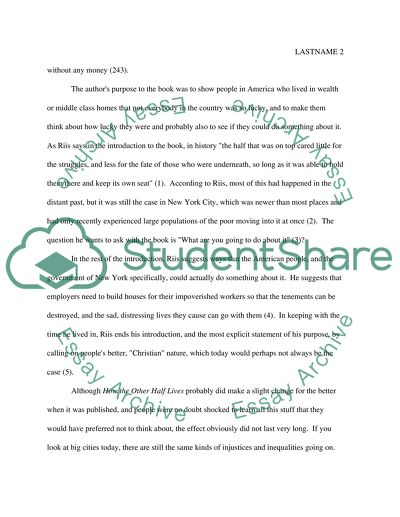Cite this document
(“Critical Essay - How The Other Half Lives Book Report/Review”, n.d.)
Retrieved from https://studentshare.org/history/1430195-critical-essay-how-the-other-half-lives
Retrieved from https://studentshare.org/history/1430195-critical-essay-how-the-other-half-lives
(Critical Essay - How The Other Half Lives Book Report/Review)
https://studentshare.org/history/1430195-critical-essay-how-the-other-half-lives.
https://studentshare.org/history/1430195-critical-essay-how-the-other-half-lives.
“Critical Essay - How The Other Half Lives Book Report/Review”, n.d. https://studentshare.org/history/1430195-critical-essay-how-the-other-half-lives.


